Introduction
SeboTek changed and dramatically improved the hearing aid industry worldwide with their invention of receiver-in-the-canal (RIC) technology in 2003. More than just a new hearing aid style, SeboTek introduced an entirely new fitting method that improved hearing aid acoustics, comfort, cosmetic appeal and speed of both delivery and service. Holding multiple patents on the technology, SeboTek continues to lead the industry in RIC innovation with the development of SeboTek's High Definition 2 (HD2) instruments and the easy-CLICK coupling system.
SeboTek’s HD2 instruments continue to set new standards in hearing technology for both consumers and hearing care professionals. When joined with the easy-CLICK coupling system, SeboTek's HD2 instruments show significant advantages in digital signal processing, comfort and fitting process, subjective sound quality, and service and maintenance.
High Definition (HD) Sound Processing
Unsurpassed Wide Bandwidth
The range of hearing in the human ear extends from approximately 20 Hz at the low frequencies to 20,000 Hz in the high frequencies. SeboTek's HD2 series hearing aids covers most of this range, with an upper limit of approximately 14,000 Hz.
Bandwidth and Intelligibility
Much of the work on bandwidth and intelligibility has been conducted with respect to telephony, where bandwidth has been shown to be one of the most critical elements to understanding. Rodman (2006) indicates that an improved bandwidth can compensate for other deficiencies such as noise and reverberation, and notes that the importance of a wider audio bandwidth is becoming increasingly recognized in contemporary speech communication systems.
The point is made that, with respect to the range of human hearing, it is better matched by FM radio and television spanning 30 Hz to 15 kHz, CD audio covering 20 Hz to 20 kHz, and professional audio from 20 Hz to above 22 kHz. These extended frequency ranges have become increasingly accessible and prevalent in today’s society to the point that everyday consumers are demanding superior quality from all forms of visual and audio media. Users of communication devices expect more features, better quality, and greater intelligibility from their communication devices. That also holds true for hearing aids. HD2 has a frequency bandwidth more consistent with high-fidelity systems than with traditional hearing aids.
Hearing aids have typically amplified a fairly narrow bandwidth of frequencies, most noticeably missing both the low and high frequency ranges. Figure 1 illustrates the improvement of the SeboTek HD2 hearing aid frequency bandwidth, showing an upper frequency bandwidth limit of approximately 14,000 Hz (obtainable with the use of an HD2 processor using 32 kHz digital sampling rate). Most competitors’ hearing aids limit their upper frequency range from 6000 to 8000 Hz (processors with a digital sampling rate of 16 kHz or less). The importance of extending amplification in the high frequency range is twofold: (1) most hearing losses result in poor high-frequency hearing sensitivity, and as such, the hearing aid should be able to provide amplification for sounds not heard, and (2) most speech sounds necessary for full understanding of speech, the consonants, have their energy regions in the high frequencies.
Additionally, extension of the frequency range into the low frequencies is critical for better sound quality. A wider bandwidth further results in improved speech intelligibility in quiet and in noise (Skinner & Miller, 1983; Beck & Olsen, 2008) for those with presbycusis, and benefit is even seen when the bandwidth is only extended to 8000 Hz (Grasso, Quaglia, Farinetti, Fiorio & DeMartin, 2003). Less amplification is required to reach a satisfactory listening comfort level with a wider bandwidth (Egan & Wiener, 1946). This allows a hearing aid user to listen in louder environments at a lower level, which means that the hearing aid can reduce its activation of any noise-reduction circuitry, thereby increasing hearing aid headroom as well, making loud sounds less distorted.

Figure 1. Wideband frequency response from SeboTek's HD2 hearing instrument using easy-CLICK receiver link.
Audio Fatigue
When presented with a continual string of verbal decisions to be made while listening to ongoing speech, the listener becomes distracted. Pieces of the conversation are lost on these mental detours, trying to interpret what words were used. As this occurs repeatedly in a listening session, fatigue increases, while comprehension and interaction drop. The listener has to divert his attention much more often to figure out what words were spoken, instead of staying with the flow of the conversation. Too much of the listener’s time is spent unraveling the intended meaning instead of understanding it. A wider frequency bandwidth improves the accuracy in sentences and reduces audio fatigue.
Reverberation
Reverberation, which comes from the natural reflections occurring in any room, magnifies the degrading effect of limited bandwidth. Increasing bandwidth is very effective at counteracting this problem. In one test, word accuracy in a reverberant space was only 52 percent when the available bandwidth was 4 kHz; increasing bandwidth to 7 kHz raised this to 80 percent (Barnett, 1999). The impact of extending the bandwidth to 14,000 Hz with the SeboTek HD2 has not yet been measured, but is expected to follow, at least in part, the pattern described for the wider bandwidth systems, resulting in less degradation of the amplified signal due to reverberations in the listening environment.
Battery Life versus Bandwidth
Most hearing aid manufacturers have sacrificed bandwidth in order to achieve reasonable power consumption figures and to extend battery life. The SeboTek HD2 is able to manage these issues without sacrificing battery life.
Hearing Aid Speech and Noise Algorithms
Contemporary hearing aids have been designed with proprietary speech and noise algorithms, including the SeboTek HD2. When evaluated, some speech algorithms may show a speech quality improvement, but not an improvement in speech intelligibility (Loizou, 2007; Hu & Loizou, 2007). Similarly, noise reduction algorithms implemented in wearable hearing aids revealed no significant intelligibility benefit, but improved ease of listening and listening comfort for hearing-impaired listeners (Bentler, Wu, Kettelet, & Hurtig, 2008). Missing in these studies has been the potential impact of a wider bandwidth because of the limited range of the hearing aids used. Based on studies previously reported in this paper, it may be that attention is being focused partly in the wrong direction – not just to improving the signal-to-noise ratio (SNR) through noise reduction and speech enhancement algorithms, but adding to this, a wider frequency bandwidth as provided by the SeboTek HD2 series.
Noise and Hearing Aids
The major complaint of hearing aid wearers continues to be difficulty communicating in the presence of noise. Noise can come from environmental conditions, reverberation, internal circuit noise or acoustic feedback. It is known that the hearing-impaired person with sensorineural loss understands less in noisy situations than a normal-hearing person. This means that a hearing-impaired person needs a better SNR than a normal-hearing person. On average, the SNR required to provide a given level of speech intelligibility increases as the level of the hearing loss increases from about 4 dB for a mild loss to an estimate of 10 dB for a more severe hearing loss (Killion, 1988).
It has been suggested that improving the SNR is the primary method by which hearing aid use can effectively be improved (Killion, 1997). New circuitry and directional microphone performance in the SeboTek HD2 series were introduced to help manage the SNR so that improved hearing aid use could be realized, both for comfort and for listening comprehension.
Features
Wideband Frequency Response
Wideband frequency response of the SeboTek HD2 results from its patented transducer coupling and to the use of an unprecedented 32 kHz microprocessor. This processor samples the input signal to the hearing aid and converts it into a digital signal that is mathematically manipulated to perform the necessary amplification algorithms over a wide bandwidth, rather than for a limited bandwidth.
Voice Priority Noise Reduction
Voice Priority Noise Reduction is an adaptive, advanced digital noise reduction development. The SeboTek HD2 continually monitors background noise independently in each of the 111-channel high-resolution filter banks over the entire bandwidth. An advanced psychoacoustics model provides user comfort for both long-term steady-state noise and also for short-term, rapid noise changes in the environment. As such, it improves the SNR by reducing the amplification of noise from the user’s environment.
In this advanced algorithm, if it is determined that the noise signal (differentiated by its frequency repetition rate, which is much more rapid than speech) is stronger than the speech signal, it will impose a carefully calculated attenuation of gain in that channel. However, if the speech signal is stronger than the noise signal, the gain will not be reduced. Finally, the noise reduction gain is adjusted to perform this function in 111 individual channels (Figure 2), distinguishing this system over other systems with far fewer channels. The overall result is to retain the natural speech quality while removing a wide variety of noise types.

Figure 2. Illustration of the SeboTek HD2 wideband noise reduction system.
Adaptive Feedback Cancellation (AFX)
Acoustic feedback occurs in amplification devices when amplified sound is returned to the device’s microphone and reamplified, creating a feedback loop. This has been a major engineering focus in hearing aids over the years. SeboTek pioneered and patented a method that creates a separation of the microphone and receiver, which provides natural feedback reduction. Additionally, to manage feedback further, the SeboTek HD2 series constantly measures those conditions leading to feedback and utilizes a fast-acting circuit that electronically eliminates the feedback before it becomes audible. The intent is to ensure that the phase response causes the feedback to be negative rather than positive at any frequency where the gain is high enough to cause oscillations. Based on a phase cancellation method, this adaptive feedback cancellation allows for more than 20 dB of added stable gain.
Microphone Directionality (Auto-focus directional microphones)
This provides spatial noise reduction that is both adaptive and fully automated. The SeboTek HD2 series hearing aids utilize a two-microphone system that can operate in omnidirectional or directional (adaptive beamforming) mode (Figure 3). Directional microphones are the accepted contemporary method to improve the SNR in hearing aids. The SeboTek HD2 series further enhances directional performance with the implementation of automatic adaptive directionality.
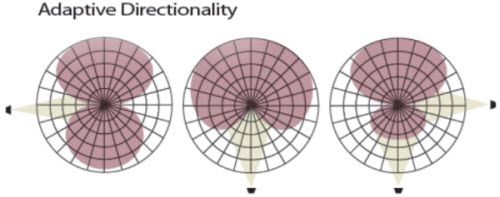
Figure 3. Spatial noise reduction with autofocus adaptive beamforming microphone system.
This automatically steers the directional polar pattern 90 to 180 degrees to reduce noise levels that originate from behind or the side of the hearing aid wearer without affecting sounds from the front. The algorithm can also gather input from the acoustic environment and automatically select whether directionality is needed or not. When not needed, only the omni microphone mode is activated and the current drain on the hearing aid battery is less, translating into additional battery life. Activation of this directionality function can be achieved at the touch of a button, or automatically as part of the instrument programming.
Wide Dynamic Range Compression
Hearing-impaired listeners require more amplification for soft sounds than for loud sounds. Multiple-channel wide dynamic range compression (WDRC) provides more gain for low input signals and less gain for high-input signals. This amplification action ensures greater audibility, maximizes listening comfort, minimizes the risk of distortion, and reduces the risk of overexposure to loud sounds.
Acoustic Environment Optimization
The SeboTek HD2 design allows for different environmental listening- such as Normal Listening, Speech in Noise, Comfort in Noise, Speech in Quiet, Comfort in Quiet, auto-switch, auto-switch plus, acoustic telephone, t-coil telephone, Sebo-Link, Music, Wind Noise Reduction and Industrial Noise.
These listening environments can be programmed into the hearing aid, and the circuit automatically optimizes the hearing aid to maximize comfort and audibility for the patient’s hearing loss. Three environments can be programmed into the hearing aid and are user-selectable via a push button on the hearing aid (Figure 4). A fourth setting is designed for telephone use.

Figure 4. Push button for user selection of different listening environments. Three listening environments/programs are available to the hearing aid user.
Two of these environmental listening options have multiple adaptive functions and manage the listening environment automatically. Auto-switch provides hands-free automatic hearing modes of Speech in Quiet, Speech in Noise, and telephone. Auto-switch plus provides six hands-free automatic hearing modes: Comfort in Quiet, Speech in Quiet, Comfort in Noise, Speech in Noise, Music, and telephone (Figure 5).
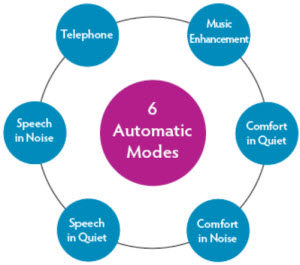
Figure 5. Automatic environment mode for hands free operation.
Environmental Setting Selections
Tones or musical chords alert the hearing aid wearer when the user-adjustable environmental settings are changed by pushing the button on the back side of the hearing aid. These tones are produced in sets of 1, 2, 3, or 4 tone bursts, with the number of bursts correlating with the user setting.
Low Battery Indicator
The SeboTek HD2 incorporates an audible warning signal heard when the battery is nearing its life’s end. This convenient feature allows the wearer to anticipate the need for a battery replacement before the hearing aid loses power.
Data Logging
Data logging is a programming feature that works behind the scenes to record how long and at what settings the hearing aid is used. This information is helpful to the fitting specialist in making decisions about what environmental settings to program into the hearing instrument. It also provides valuable information that the specialist can use for counseling to ensure the wearer has the best possible outcome in terms of performance and satisfaction with the hearing instrument.
Auto Telecoil
Auto telecoil enables the hearing aid to be used when listening on the telephone. The hearing aid automatically recognizes when the telephone handset is placed near the ear and allows the telephone signal to be inductively coupled to the hearing aid, thus avoiding interfering background noise from being amplified or feedback from occurring.
This feature can be adjusted to enable both the telephone signal and hearing aid microphone to function at the same time, while allowing the signal strength of each to be individualized.
MPS (Moisture Protection System) Nanocoating
Hearing aids are subjected to moisture and water penetration from sweat and environmental conditions, as well as to cerumen, body chemistry, and personal care products such as lotions, gels and hairspray. Ingress in to the hearing instrument and components may lead to battery corrosion, reduced reliability, intermittency and device failure, contributing to wearer frustration and inconvenience, as well as increased repair costs.
The SeboTek HD2 uses a Moisture protection System (MPS) based on a new technology called nanocoating to reduce moisture effects that compromise hearing aid performance (Figure 6). Nano (1 billionth of a meter) technology fills molecules into the capillaries of the hearing aid’s surfaces, which then forms a transparent nano-protected film as a coating.
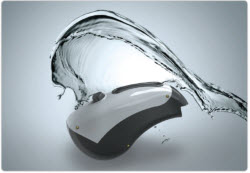
Figure 6. SeboTek HD2 hearing aid with Moisture Protection Seal applied. This advanced nanotechnology repels moisture from the hearing aid.
The MPS uses a special plasma gas to molecularly bind a moisture-repellent layer to the hearing aid and components. Every component of the hearing aid is coated at a nanoscopic level, resulting in a durable liquid-repellent coating. The process offers superior oil and water repellency by reducing the surface energy to ultra-low levels. This means that liquid will run off and not penetrate the surface of the hearing aid. It is applied within a specially designed vacuum chamber to chemically attach a nanometer-thin polymer layer over the entire surface of the hearing aid and its components. During the plasma process, the monomer becomes part of the material itself.
The coating is molecularly bound to the product surface, becoming inseparable from it. Because the coating is one thousand times thinner than a human hair, it does not affect the look, feel, or acoustic performance of the hearing aid. SeboTek hearing aids, with and without nanocoating, have been evaluated under conditions of 100°F temperature and 100% relative humidity for 48-hour-cycle periods of time (10 cycles), with results indicating that nanocoating protects the hearing aids and keeps them functioning under those conditions (Staab, 2012a).
It should be noted that these testing conditions are more severe than what would be expected by an individual wearing hearing aids, even under combined extreme humidity and temperature conditions.
Easy-CLICK Coupling System
High Definition Acoustic Advantages
Easy-CLICK is a high definition receiver and ear tip combination designed to improve sound quality and physical comfort. The ear tips incorporate a soft, thin membrane with 360-degree mobility to navigate the bends of the ear canal in order to position the receiver comfortably in the canal.
Deep Fit Receiver Positioning
Fitting a hearing aid deeply into the ear canal such that it makes physical contact with the bony portion of the ear canal and reduces the residual volume between the tip and the tympanic membrane can provide many acoustic advantages (Staab, 1991). This fitting approach is expanded and improved upon using SeboTek’s patented RIC design and easy-CLICK coupling system.
The SeboTek HD2 hearing aid separates the receiver from the other signal processing components, which enables the receiver to fit in the canal substantially unoccluded. The easy-CLICK ear tip has multiple flex zones which enable it to be positioned comfortably near the second bend of the canal, while making contact in the bony portion, reducing the residual volume. This fit concept has significant advantages, and it is important to identify and emphasize why these advantages are incorporated in the Sebotek HD hearing instrument.
Greater high-frequency gain. Fitting the receiver deeply in the ear canal results in an increase in the overall sound pressure, especially in the high frequencies. This increase is in addition to the amplification and is the result of the smaller residual volume in the ear canal between the speaker and the eardrum. This “free” amplification is measured to be approximately 15 dB in the high frequencies, the area providing the greatest contribution to speech discrimination (Figure 7).
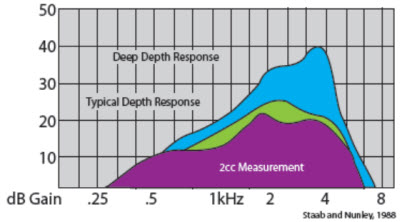
Figure 7. Added “free” gain (blue) resulting from placing the hearing aid receiver deeply into the ear canal, leaving a small residual volume between the tip and the eardrum. A shallower insertion depth and larger residual volume typically used with hearing aids is shown in the light green. Both measurements are made with a microphone probe to determine real-ear amplification. These are compared with the standard 2cc coupler measurement method of displaying the hearing aid frequency/gain characteristics.
Less gain is required. The effect of the smaller residual volume between the tip of the receiver and the eardrum results in a reduction in the gain control setting, because less gain is required to achieve the same loudness sensation.
Lower output levels are required. Because less gain is required, lower output levels can be used in the instrument, which serves to keep from exceeding the loudness discomfort level (LDL) of the patient.
Less prone to acoustic feedback. A key benefit of a lower gain level requirement is that the hearing aid is less prone to feedback.
Increased hearing aid headroom. Increased headroom is identified as contributing significantly to hearing aid quality (Preves & Woodruff, 1990). This also is a result of less gain being required to fit the loss, meaning that there is more useable amplification before saturation is reached.
Less background noise. The fitting acoustically adds a greater high-frequency response; therefore, low-frequency amplification of annoying and interfering background noises is less likely to occur.
Amplified sound is presented more directly to the eardrum. This results in a more efficient transmission of the signal and also reduces undesirable peaks and valleys that are observed in the amplified signal from the long hollow tubing used by non-RIC behind-the-ear hearing aids.
Elimination of the occlusion effect. The easy-CLICK system provides multiple sizes of ear tips that are available with both open and closed venting options. The fitting advantage of easy-CLICK is that the occlusion effect can be eliminated with both open and closed fitting configurations.
Comfortable deep fit. The ultra-thin membrane, made of a memory-forming material, retains the true shape of the ear canal, creating a customized seal to eliminate the occlusion effect. Multiple flex zones with 360° mobility allow the easy-CLICK tip to comfortably adapt vertically and horizontally to canal bends.
One Receiver - Multiple Coupling Options
Recall Boyle’s Law: an inverse relationship exists between volume and pressure. Applied to the ear, the sound pressure level (SPL) is effectively doubled each time canal volume is decreased by half. Using this basis, a single receiver can be used to cover a wider range of hearing loss versus utilizing multiple receiver sizes for the same range of hearing loss. With the easy-CLICK coupling system, that wider range of hearing loss can be reached with a single receiver using either an open or sealed hi-fi tip, while still eliminating the occlusion effect (Figure 8).
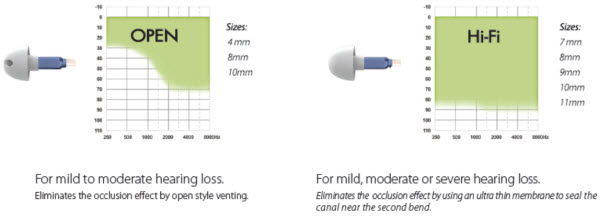
Figure 8. Added “free” gain effect on fitting range as a result of placing the hearing aid receiver deeply into the ear canal, leaving a small residual volume between it and the eardrum.
Occlusion Effect
The ear canal is bounded medially by the eardrum and externally by the end of the earmold or ear tip and the bony and cartilaginous portions of the ear canal. If any of these boundaries vibrate, the residual volume in the ear canal changes, and an increased sound pressure is generated within the ear canal. This is due to the fact that the bones of the skull and tissues connected to these bones do not move as a single unit; as a result, phase differences occur between these movable structures (von Békésy, 1960).
When a person not wearing a hearing aid speaks, these resulting pressure increases generated in the ear canal take the path of least resistance, which is out of the ear toward the external environment. However, when a person is wearing a hearing aid that occludes the ear canal, especially in the cartilaginous one-third of the ear canal, the pressures generated will still take the path of least resistance, but that is now toward the eardrum. The result is an increase in the sound pressure delivered to the eardrum, especially in the low frequencies and may be noticeable during walking, chewing, and for other body-generated sounds and movements.
To the person experiencing the occlusion effect, their voice sounds unnaturally loud and hollow when they speak. This is often undesirable and disturbing to hearing aid users. Increases in low-frequency amplification resulting from the occlusion effect have been reported as great as 13 to 30 dB (Revitt, 1992; Staab & Finlay, 1991; Killion, Wilber, & Gudmundsen, 1988). Because a 10 dB increase results in a doubling of the perceived loudness, the resulting loudness may be as much as four times greater than when no hearing aid is used.
Occlusion Effect Solutions. Two methods are known to eliminate or reduce the occlusion effect with hearing aids. The first is to apply a vent or opening in the ear tip of at least 3 mm in diameter to allow these sounds to escape the ear canal. The second is to insert the ear tip sufficiently deep in the ear canal to make contact with the bony portion of the ear canal, and prevent occlusion from occurring. Both of these approaches are incorporated into the patented SeboTek HD2 series hearing aids, with or without venting. SeboTek hearing aids have been shown to result in complete occlusion effect elimination with the initially-designed tips (Staab, Dennis, Schweitzer, & Weber, 2004).
Testing of the easy-CLICK tip, both for open and closed tip types, shows that no occlusion effect occurs (Figure 9) when compared to the same subjects wearing no hearing aids (Staab, 2012b).
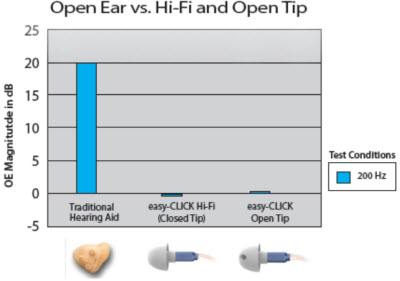
Figure 9. Average Occlusion Effect (OE) measurements of the frequency of 200 Hz, where occlusion effect is greatest, comparing the magnitude of the traditional hearing aid, the easy-CLICK Hi-Fi (Closed Tip), and easy-CLICK Open Tip test conditions. Traditional hearing aid is what one would expect for occlusion effect using a traditional means of amplification that fills the outer one-third of the ear canal. Results show that there is a significant difference between traditional hearing aids and both of the SeboTek coupling options, indicating that neither of the SeboTek coupling options results in an occlusion effect.
Mechanical Design Advantages
Cerumen Management
The number one operational concern related to hearing aids is cerumen buildup in the ear tip sound bore. Cerumen provides a natural protection for the ear canal, keeping it from drying out, moving debris, repelling insects, etc., but it often causes hearing aids to malfunction. Manufacturers have provided a variety of wax filter techniques to find a solution to this problem, but the fact exists that for many hearing aid users, cerumen will be an issue regardless of what is done. Most often, the consumer must return the hearing aids to the dispenser to have the filters replaced or the cerumen removed from them. This is not convenient for the consumer and leads to downtime while the instruments are not functioning optimally, and frustration. The SeboTek HD2 solution was to design an ear tip that the consumer could replace as needed in the comfort of his/her own home, without any special tools or training.
Easy-CLICK Tip
The easy-CLICK coupling incorporates a dual barrier wax filter system. First, a filter is embedded into the tip and second, a nano-coated filter is incorporated into the receiver housing. This unique SeboTek solution provides consumer replaceable ear tips that combine ease-of-replacement, comfort, cerumen management, and moisture repellance. (Figure 10).
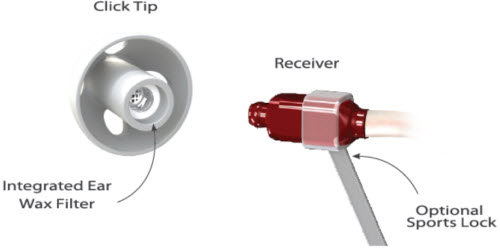
Figure 10. SeboTek easy-CLICK tip and receiver arrangement.
The filter is embedded in the replaceable tip, and the consumer has an inventory of these tips. They are supplied in a blister package that the consumer can replace whenever the need arises, such as when the hearing aid seems to go dead or the amplification becomes weaker. Both occurrences may be signs of cerumen involvement. A summary of key easy-CLICK features are as follows:
Nanocoating. Nanocoating repels moisture and skin oils that could accumulate in the ear canal and cause a hearing aid malfunction.
Pressure relief vent. Lybarger (1979) showed that a small vent of approximately 0.025” (about 0.6 mm) provides a pressure relief from behind the earmold tip and the external environment. A small pressure vent is incorporated in the easy-CLICK Hi-Fi tips to prevent any pressure build up. This is not needed for the open tips.
Soft and comfortable. Designed to comfortably flex and form to earcanal bends, easy-CLICK tips have an improved softness to ensure a comfortable fit, starting with the initial insertion (Figure 11). Memory forming material retains the true size and shape of the ear canal, increasing comfort and user satisfaction.
Larger diameter CLICK tip sound bore. The sound bore of the tip is larger in diameter than that found in most other prefabricated ear tips (2.5 mm vs. 1.5 mm for competitor RIC devices and 0.9 mm for thin tube hearing aids). This larger diameter, tapered and wider toward the end of the sound bore, along with a fixed bore depth of approximately 10 mm may create a limited horn effect that improves high frequency amplification by approximately 2 to 3 dB, especially when coupled with a wideband frequency response of approximately. Essentially, such a horn acts as an impedance transformer to match the high impedance of the receiver to the moderate impedance load of the eardrum (Lybarger, 1980; Cox, 1979; Killion, 1981; Dillon, 2001). Aside from a potential horn effect, the larger diameter is less likely to be occluded by cerumen.
Optional sports lock. Intended for active hearing aid users, the sports lock fits tightly onto the receiver link with the free end of the sports lock placed inside the concha rim.
Easy-CLICK replacement. The earpiece tip can be replaced quickly and easily with no special training. This is a definite advantage for the consumer, and a long-desired feature (Figure 12).
Multiple dispenser/consumer fitting options. The easy-CLICK tips are available in different sizes and configurations to fit ears comfortably. Additionally, they are available in Hi-Fi (sealed ear), open ear, or custom-molded configurations, depending on the needs of the consumer. This means that the same SeboTek HD2 hearing aid can be used for mild to severe hearing losses, with an open or closed ear tip. This is a significant cost and inventory savings for hearing aid dispensers who can now fit essentially 90% of all consumers with a single hearing aid by maintaining a small inventory of receivers and easy-CLICK tips.
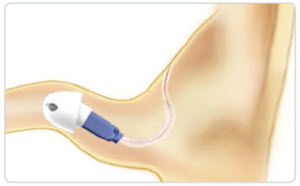
Figure 11. Illustration of the flexibility designed into the easy-CLICK tip to conform to the size, shape and contour of the ear canal bends. The tip (white portion) freely articulates on the receiver.
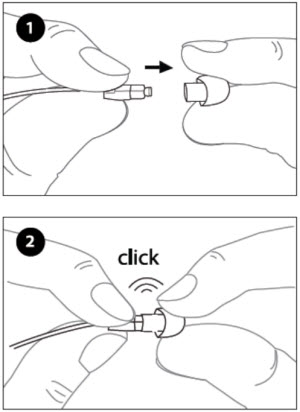
Figure 12. Illustration of ease of replacement for easy-CLICK tips.
Sound Quality Advantages
Subjective Acoustic Transparency
Hearing aids often sound “different” to new users of hearing aids. Different is not all bad, unless it results in the user discontinuing hearing aid use. At times, “different” refers to the ability to hear high frequency sounds that contribute to intelligibility, but which may not be acceptable sound quality. It is important to recognize that there is no published direct correlation between sound quality and intelligibility. Still, some have suggested that they might go hand-in-hand, but only under certain conditions, such as in poor noise environments (Killion, 2006). Sound quality in its final analysis is a subjective preference that does not have a standardized measurement procedure for hearing aids, nor for any other amplification device.
A Judgement of Sound Quality (JSQ) test has been developed and used to assess the performance of hearing aids (Gabrielsson, Schenkman, & Hagerman, 1988; Gabrielsson, Hagerman, Bech-Kristensen, & Lundberg, 1990; Lundberg, Ovegård, Hagerman, Gabrielsson, & Brändström, 1992; Narendran & Humes, 2003), but the analysis seems to indicate that its application to sound quality is not as applicable as originally thought. The test attempted to scale and relate eight dimensions of sound quality (softness, brightness, clarity, fullness, nearness, loudness, spaciousness, and overall impression) to the listening experience. A test for telephony systems, the PESQ (Perceptual Evaluation of Speech Quality) is a family of standards comprising a test methodology for automated assessment of the speech quality as experienced by a user. However, it is based on and measures only narrow bands of frequencies in such systems, and as such, does not have application to wideband hearing aids, such as the SeboTek HD2 series.
Engineers, audiologists, psychoacousticians, musicians, and the consumer are likely to have different opinions as to what constitutes good sound quality. To complicate this further, variables such as room reverberation, background noise, signal-to-noise ratio, distance from the sound source, loudness and length of the sound impact the end result of the signal. To address this issue, SeboTek has employed the latest innovations and technologies to improve those features that are considered to contribute to good sound quality. This is often interpreted as ensuring that the hearing aid output is true to the input signal, but with the addition of having sufficient amplification to meet the needs of the hearing-impaired listener, or acoustic transparency. This approach has been incorporated into the design of the SeboTek HD2 hearing aid series.
The following features are designed into the SeboTek HD2 hearing aid to provide acoustic transparency:
- Broadband frequency response
- Low total harmonic distortion
- Smooth frequency response. Peaks and valleys in the frequency response result in poor sound quality and lead to acoustic feedback and/or a limiting of the upper amplification limits of the hearing aid. SeboTek has addressed this issue by applying advanced smoothing algorithms and acoustic coupling that eliminates long sound tube effects by placing the receiver in the ear canal close to the eardrum rather at the ear level.
- Reduced background noise. The SeboTek HD2 features adjustable Voice Priority and Ambient Noise Reduction to facilitate improved hearing in noise.
- Low internal noise. The conclusion regarding internal noise is that, for preferred sound quality, internal noise should be low. The SeboTek HD2 hearing aid transducers provide very low internal noise and exceptional sound quality.
- Flexible output. A high OSPL90 (output sound pressure level with 90 dB input) is required for a hearing aid to have a wide dynamic range. However, hearing aids are designed to limit the output to the listener’s uncomfortable level, which at times is sufficiently low, limiting the dynamic range. The SeboTek HD2 hearing aid has been designed to allow the dispenser to customize the output level consistent with the listener’s dynamic range requirements.
- Elimination of the occlusion effect. The importance of eliminating the occlusion effect has been reported in this paper. The SeboTek HD2 hearing aid, in all of its fitting options, does not produce an occlusion effect.
- Acoustic feedback management. Feedback is controlled with the AFX Feedback canceller to prevent excessive gain and its concomitant distortion from masking speech information.
- Directional microphones. Spatial release from masking is more likely to occur when directional microphone hearing aids are used (Hornsby & Ricketts, 2007).
The SeboTek patented RIC hearing aids are designed to meet the challenges of making a hearing aid sound acoustically transparent. This success is evident by the industry-wide growth trend for RIC devices. Figure 13 illustrates the results of a study asking subjects to compare the sound quality of the SeboTek RIC compared to their current non-RIC hearing aids (SeboTek, 2004). More than 75% preferred the SeboTek RIC design and performance.
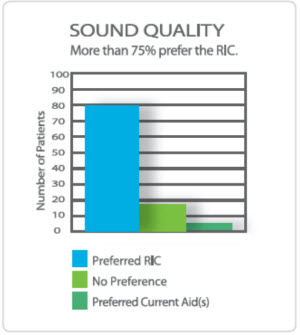
Figure 13. Subject responses to sound quality when asked to compare SeboTek hearing aids to their current non-RIC hearing aids. Seventy-five percent of the 109 subjects sampled preferred the sound quality of the SeboTek hearing aid.
References
Agnew, J. & Thornton, J. M. (2000). Just noticeable and objectionable group delays in digital hearing aids. Journal of the American Academy of Audiology, 11(6), 330-336.
Barnett, P. W. (1999). Overview of speech intelligibility. Proceedings of the Institute of Acoustics, UK, 21(5).
Beck, D. L., & Olsen J. (2008). Extended bandwidths in hearing aids. Hearing Review, 15(11), 22-26.
Bentler, R., Wu, H., Kettel, J., & Hurtig, R. (2008). Digital noise reduction: Outcomes from laboratory and field studies, International Journal of Audiology, 47(8), 447–460.
Christensen, L. A. (2004, March). Research findings with open hearing aid fittings. Paper presented at the annual meeting of the American Auditory Society, Scottsdale, AZ.
Cox, R. M. (1979). Acoustic aspects of hearing aid-ear canal coupling systems. Minneapolis, MN: Educational Publications Division Maico hearing instruments.
Dillon, H. (2001). Hearing Aids. New York, NY: Thieme.
Dillon, H., Keidser, G., O’Brian, A., & Silberstein, H. (2003). Sound quality comparisons of advanced hearing aids. Hearing Journal, 56, 30-40.
Egan, J. P. & Wiener, F. M. (1946). On the intelligibility of bands of speech in noise. Journal of the Acoustical Society of America, 8, 435-441.
Feeley, M. & Staab, W. (2009). RIC/RITE technology - changing the course of our future. Advance for Audiologists, Jan/Feb, 32, 34, 36.
French, N. R. & Steinberg, J. C. (1947). Factors governing the intelligibility of speech sounds. Journal of the Acoustical Society of America, 19(1), 90-119.
Frye, G. (2004, March). Comparison of two methods of measurement of digital hearing aid processing delay. Paper presented at the annual meeting of the American Auditory Society, Scottsdale, AZ.
Gabrielsson, A., Schenkman, B. N., & Hagerman, B. (1988). The effects of frequency responses on sound quality judgments and speech intelligibility. Journal of Speech and Hearing Research, 31, 166-177.
Gabrielsson, A., Hagerman, B., Bech-Kristensen, T., & Lundberg, G. (1990). Perceived sound quality of reproductions with different frequency responses and sound levels. Journal of the Acoustical Society of America, 88, 1359-1366.
Gierlich, H.W., Voll, S., Jax, P., & Ketler, F. (2004, March). Speech quality assessment for wideband communication scenarios. Presented at the ETSI workshop on Wideband Speech Quality in Terminals and Networks, Mainz, Germany. Retrieved from https://www.ind.rwth-aachen.de/fileadmin/publications/gierlich04.pdf
Grasso, C., Quaglia, D., Farinetti, L., Fiorio, G., & De Martin, J. (2003). Wide-band compensation of presbycusis. Paper presented at Signal Processing, Pattern Recognition, and Applications, Rhodes, Greece.
Hornsby, B. W. Y. & Rickets, T. A. (2007). Effects of noise source configuration on directional benefit using symmetric and asymmetric directional hearing aid fittings. Ear and Hearing, 28(2), 177-186.
Hu, Y., & Loizou, P. (2007). Subjective comparison and evaluation of speech enhancement algorithms. Speech Communications, 49, 588–601.
Killion, M. C. (1997). SNR loss: I can hear what people say, but I can’t understand them. The Hearing Review, 4(12), 8-14.
Killion, M. C. (1988). Principles of high fidelity hearing aid amplification. In R. E. Sandlin & G. Grimble (Eds.) Handbook of hearing aid amplification: Theoretical and technical considerations (pp. 45-79). San Diego, CA: Singular Publishing Group.
Killion, M. C., Wilber, L. A., & Gudmundsen, G. (1988). Zwislocki was right...a potential solution to the “hollow voice” problem (the amplified occlusion effect) with deeply sealed earmolds. Hearing Instruments, 39(1), 14.
Killion, M. C. (1981). Earmold options for wideband hearing aids. Journal of Speech and Hearing Disorders, 46, 10-20.
Killion, M. C. (2006). Research and clinical implications for high-fidelity hearing aids. In Hearing Care for Adults: International Conference Proceedings (pp. 181-191). Chicago, IL: Phonak.
Lindley, G. (2009). Children seen to gain extra benefit from greater bandwidth, binaural compression. The Hearing Journal, 62(10), 28-31.
Loizou, P. C. (2007). Speech enhancement: theory and practice. Boca Raton, FL: CRC Press.
Lundberg, G., Ovegård, A,. Hagerman, B., Gabrielsson, A., & Brändström, U. (1992). Perceived sound quality in a hearing aid with vented and closed earmould equalized in frequency response. Scandinavian Audiology, 21(2), 87-92.
Lybarger, S. (1979). Controlling hearing aid performance by earmold design. In V. D. Larson, D. P. Egolf, R. L Kirlin, & S. W. Stile (Eds.) Audiology and hearing prosthetics research (pp. 101-132). New York, NY, Grune and Stratton.
Lybarger, S. (1980). Earmold venting as an acoustic control factor. In G. A. Studebaker & I. Hochberg (Eds.), Acoustical factors affecting hearing aid performance (pp. 197-217). Baltimore, MD: University Park Press.
Narendran, M., & Humes, L. (2003). Reliability and validity of judgments of sound quality in elderly hearing aid wearers. Ear and Hearing, 24, 4-11.
Plomp, R. (1988). The negative effect of amplitude compression in multichannel hearing aids in the light of the modulation-transfer function. Journal of the Acoustical society of America, 83(6), 2322-2327.
Preves, D. A., & Woodruff, B. D. (1990). Some methods of improving and assessing hearing aid headroom. Audecibel, 38, 8-13.
Rodman, J. (2006). The effect of bandwidth on speech intelligibility. Polycom. Retrieved from https://docs.polycom.com/global/documents/whitepapers/effect_of_bandwidth_on_speech_intelligibility_2.pdf
Revit, L. J. (1992). Two techniques for dealing with the occlusion effect. Hearing Instruments, 43, 12-18.
SeboTek. (2004). PAC survey data: Comfort, sound quality, sound of voices, cosmetic appeal. Tulsa, OK.
Skinner, M.W. & Miller, J. D. (1983). Amplification bandwidth and intelligibility of speech in quiet and noise for listeners with sensorineural hearing loss. International Journal of Audiology, 22(3), 253-279.
Staab, W. J. (1991). Deep canal length hearing aid fittings- a rationale and procedures. Hearing Instruments, 42(1).
Staab, W. J. (2012a, March 5). Nano-Coating and hearing aid directional performance [Web log post]. Retrieved from https://hearinghealthmatters.org/waynesworld/2012/nano-coating-and-hearing-aid-directional-performance/
Staab, W. J. (2012b, October). [Sebotek CLICK speaker link and tip combination: Occlusion effect results.] Unpublished raw data.
Staab, W. J., Dennis, M. J., Schweitzer, C. H., & Weber, J. E. (2008, March). Measuring the occlusion effect in a deep-fitting hearing device. The Hearing Review, 11, 44-50. Retrieved from https://www.hearingreview.com/practice-management/15978-measuring-the-occlusion-effect-in-a-deep-fitting-hearing-device
Staab, W. J. & Finlay, B. (1991). A fitting rationale for deep canal hearing. Hearing Instruments, 42(6), 8-10, 50.
Stelmachowicz, P. G., Pittman, A. L., Hoover, M., & Lewis, D. E. (2001). Effect of stimulus bandwidth on the perception of /s/ in normal and hearing-impaired children and adults. Journal of the Acoustical Society of America, 110, 2183-2190.
Stone, M. A., & Moore, B. C. J. (1999). Tolerable hearing aid delays. I. Estimation of limits imposed by the auditory path alone using simulated hearing losses. Ear and Hearing, 20, 182.
Stone M. A., & Moore, B. C. J. (2002). Tolerable hearing aid delays. II. Estimation of limits imposed during speech production. Ear and Hearing, 23, 325-338.
Stone, M. & Moore, B. (2003). Tolerable hearing aid delays. II. Effects on speech production and perception of across-frequency variation in delay. Ear and Hearing, 24, 175-183.
von Békésy, G. (1960). Bone Conduction. In Experiments in hearing (pp.127-203). New York, NY: McGraw-Hill.
Cite this content as:
Staab, W., Jackson, P., & Feeley, C. (2013, July). The Science behind Sebo HD and Easy-CLICK coupling. AudiologyOnline, Article 11982. Retrieved from: https://www.audiologyonline.com/



